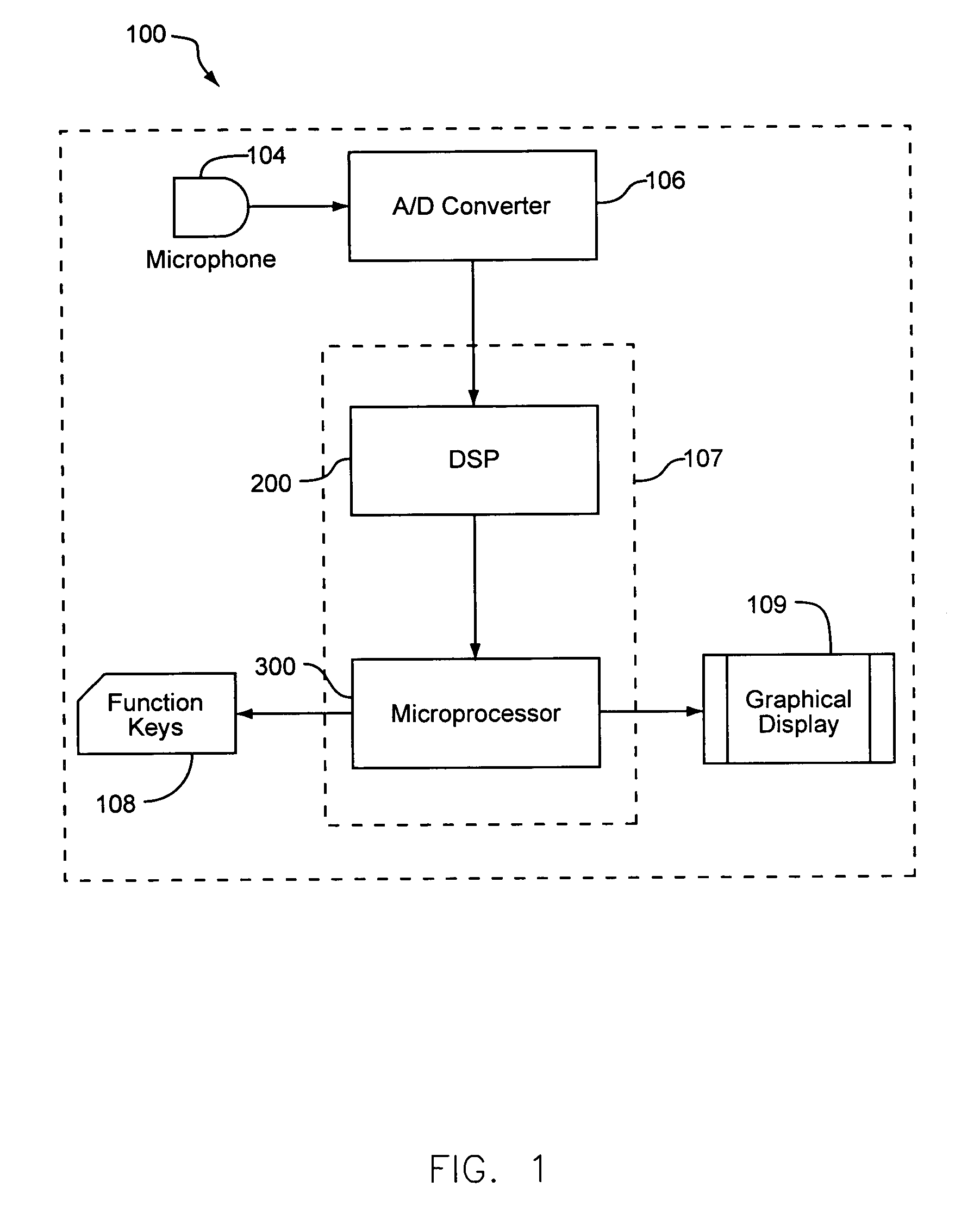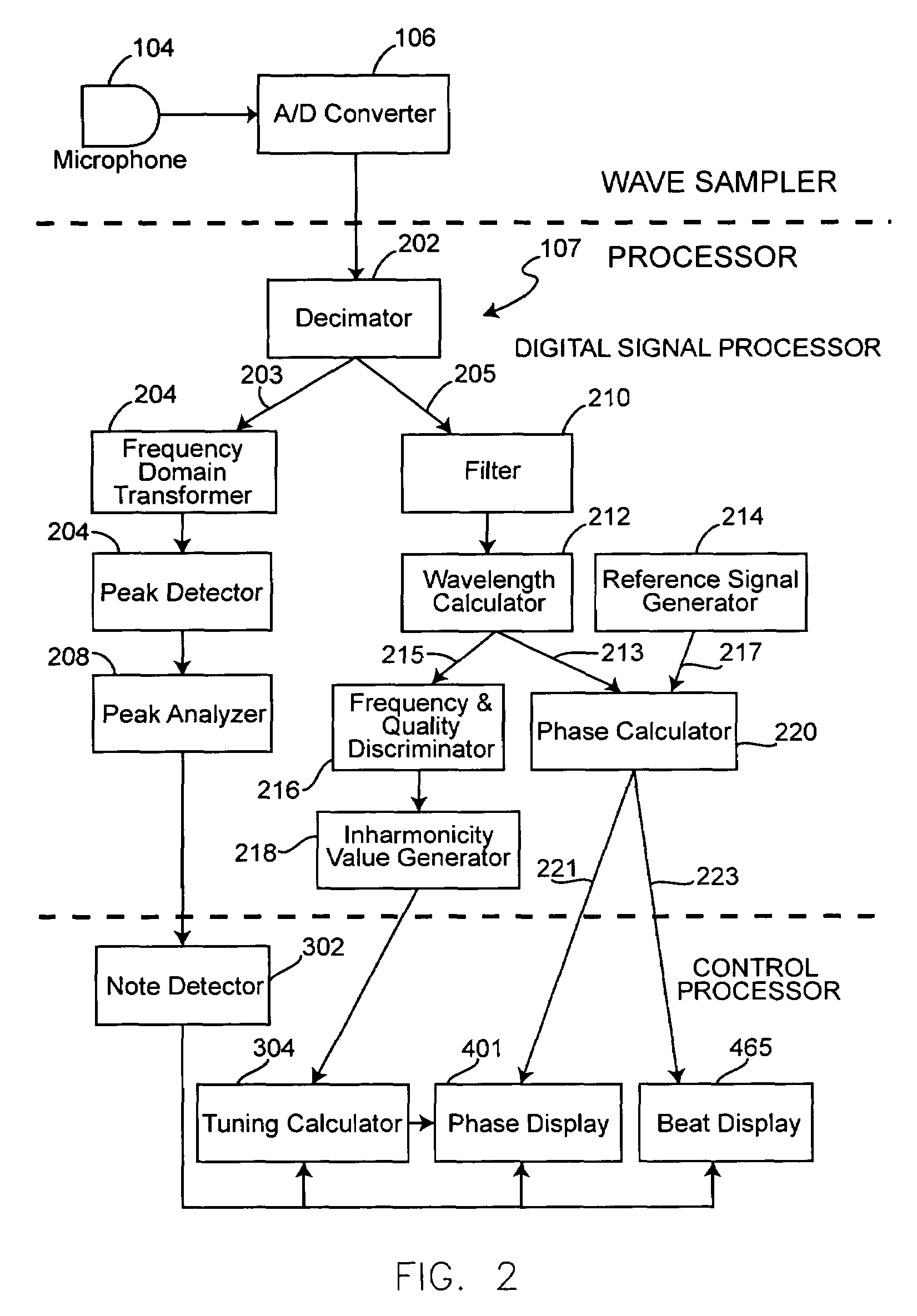Electronic tuning system and methods of using same
- Summary
- Abstract
- Description
- Claims
- Application Information
AI Technical Summary
Benefits of technology
Problems solved by technology
Method used
Image
Examples
Embodiment Construction
[0043]Referring now to the drawings in general and FIG. 1 in particular, a preferred embodiment of a system according to the present invention is shown generally at 100. The system 100 is meant to be used by a technician in the course of tuning a musical instrument having inharmonicities, such as a piano. The components of the system 100 may be contained within a single housing in a convenient stand alone unit, or may be a combination of software and hardware, such as a combination including a personal computer.
[0044]The system 100 includes a wave sampler defined by a microphone 104 and an analog-to-digital converter 106. The wave sampler acts to convert a sound from the instrument into a digitalized signal representative of the sound wave. Suitable microphones and analog-to-digital converters will be apparent to those skilled in the art. An example of a suitable microphone is an Electret Condensor Microphone Cartridge sold by Panasonic, Part No. WM-52BM, and distributed by Allied E...
PUM
 Login to View More
Login to View More Abstract
Description
Claims
Application Information
 Login to View More
Login to View More - R&D
- Intellectual Property
- Life Sciences
- Materials
- Tech Scout
- Unparalleled Data Quality
- Higher Quality Content
- 60% Fewer Hallucinations
Browse by: Latest US Patents, China's latest patents, Technical Efficacy Thesaurus, Application Domain, Technology Topic, Popular Technical Reports.
© 2025 PatSnap. All rights reserved.Legal|Privacy policy|Modern Slavery Act Transparency Statement|Sitemap|About US| Contact US: help@patsnap.com



